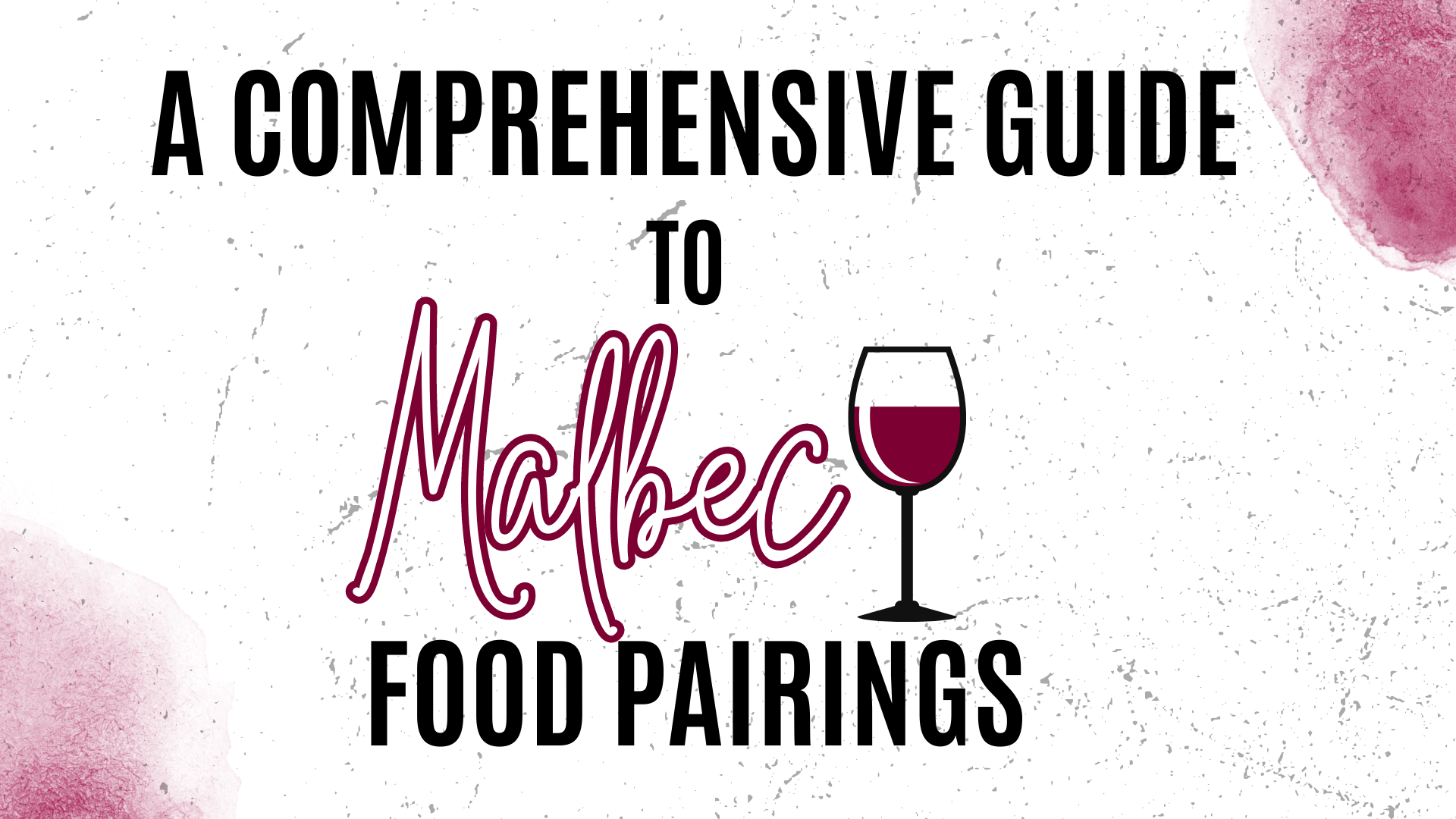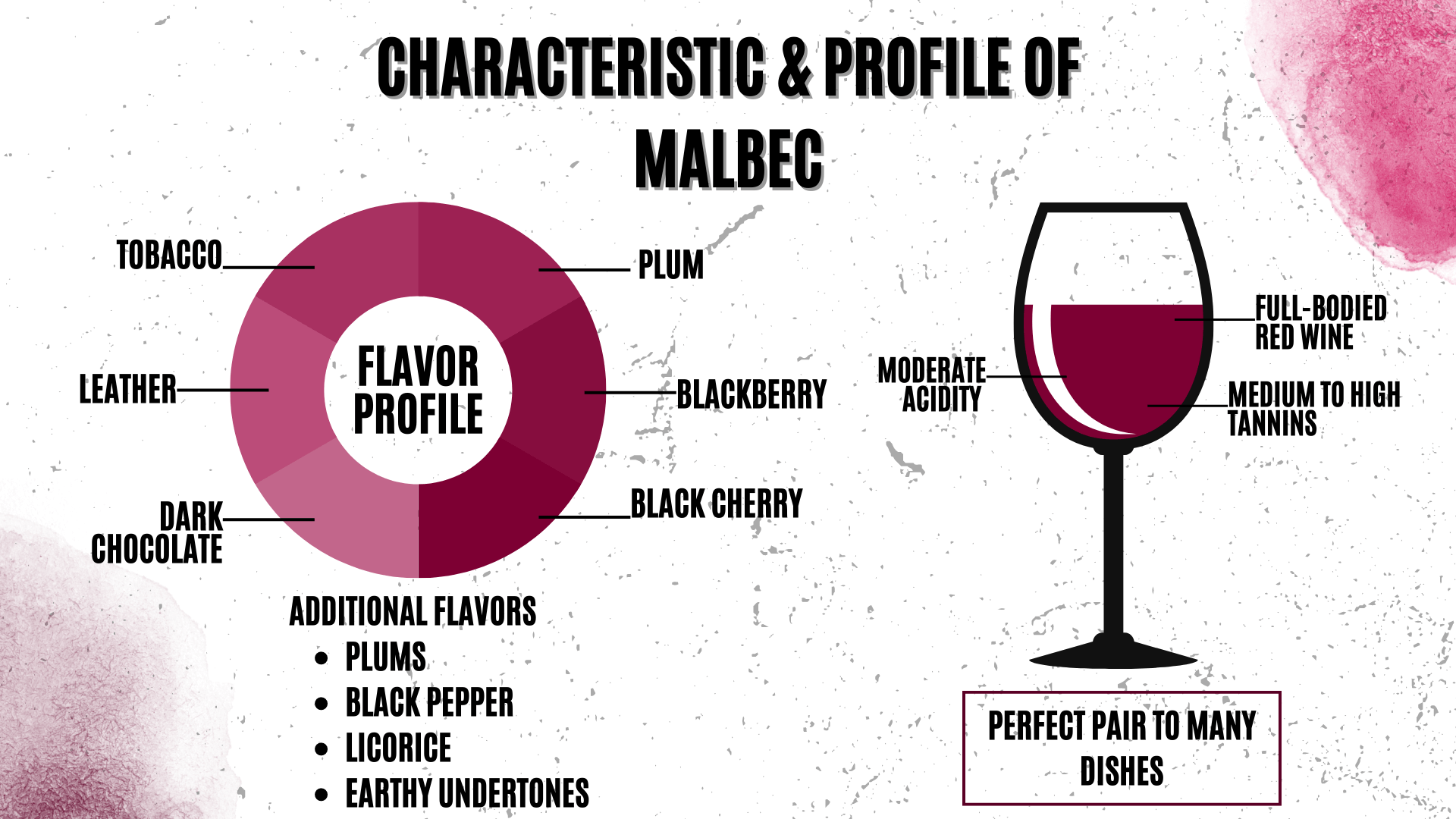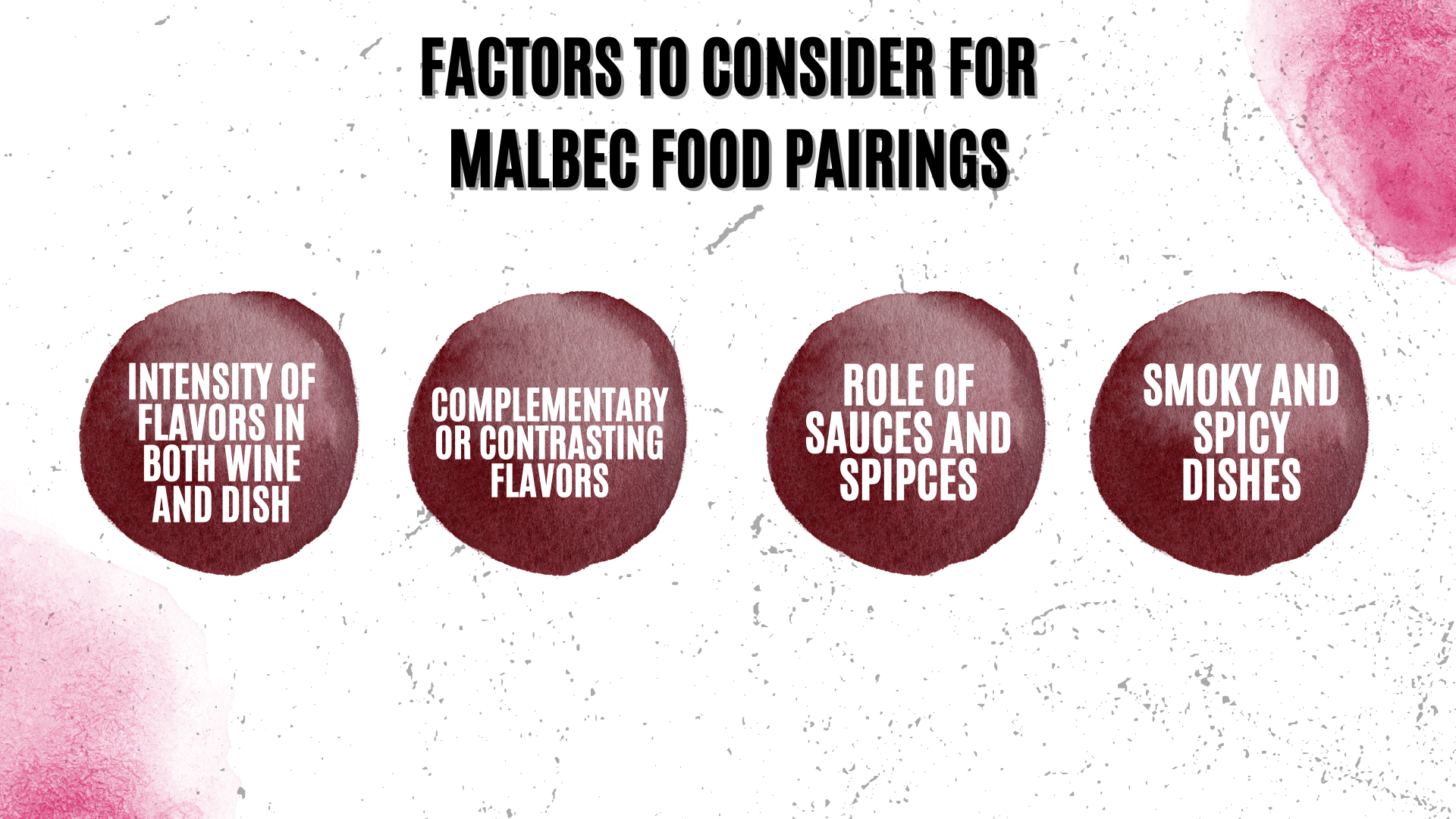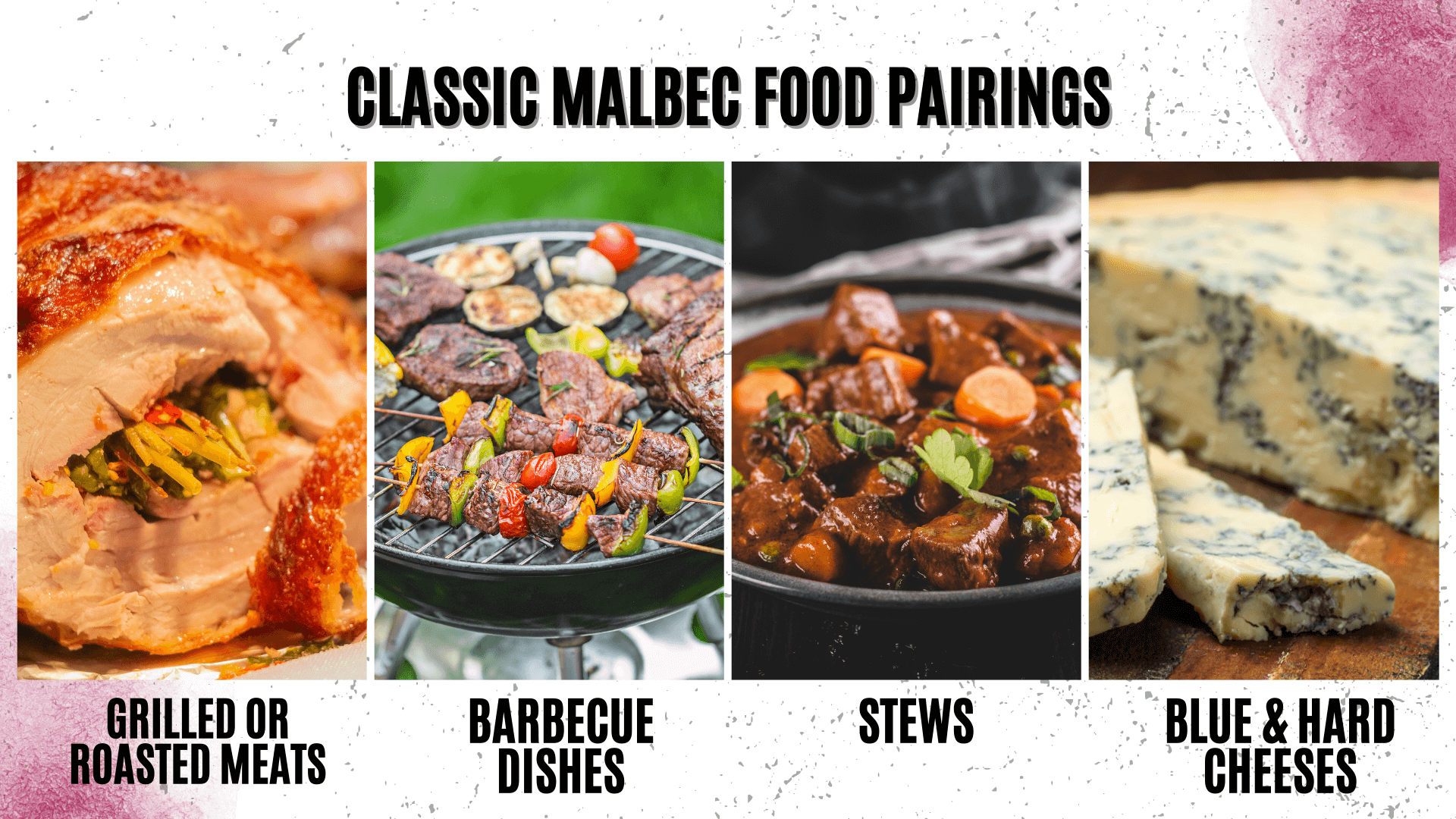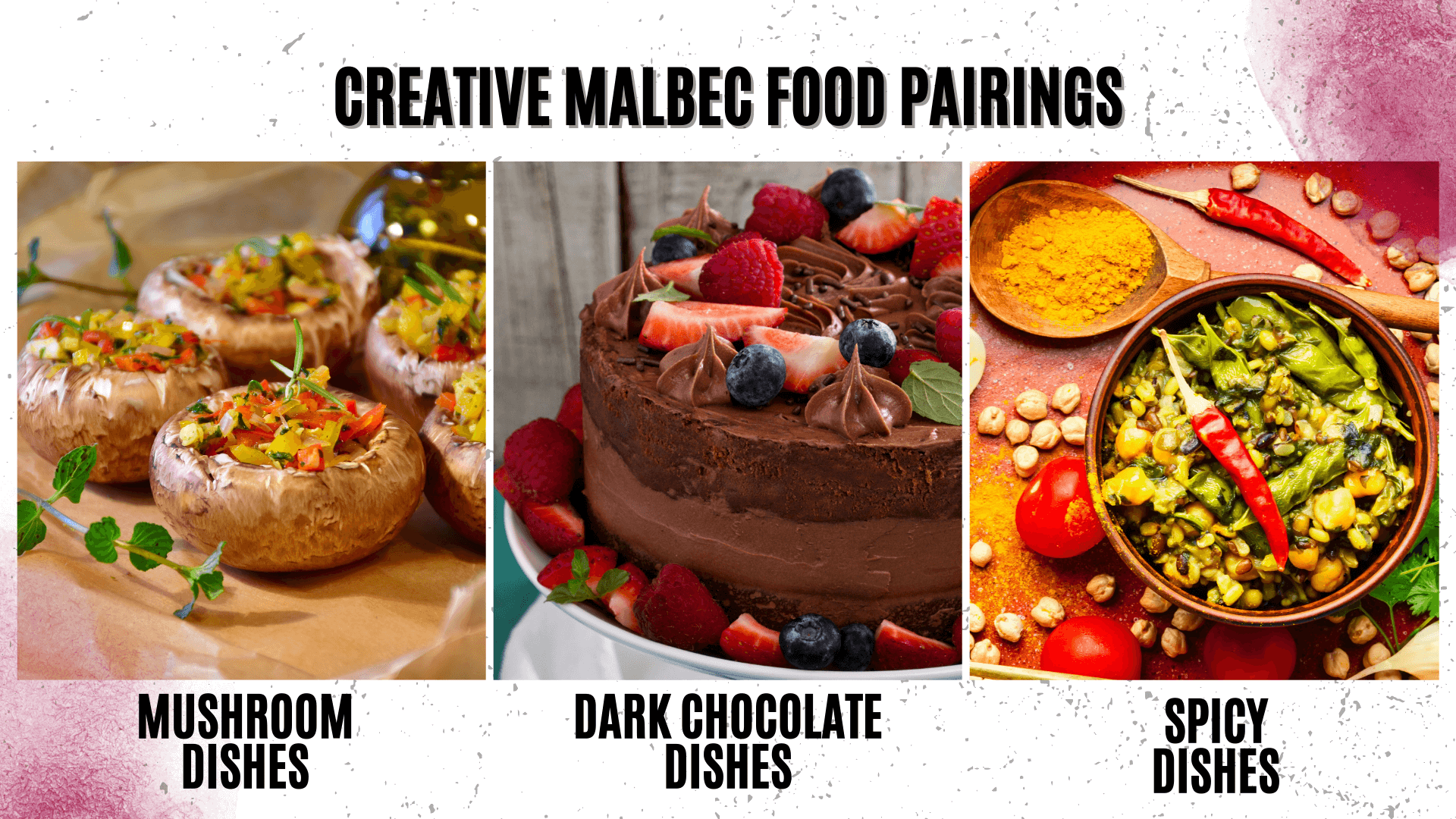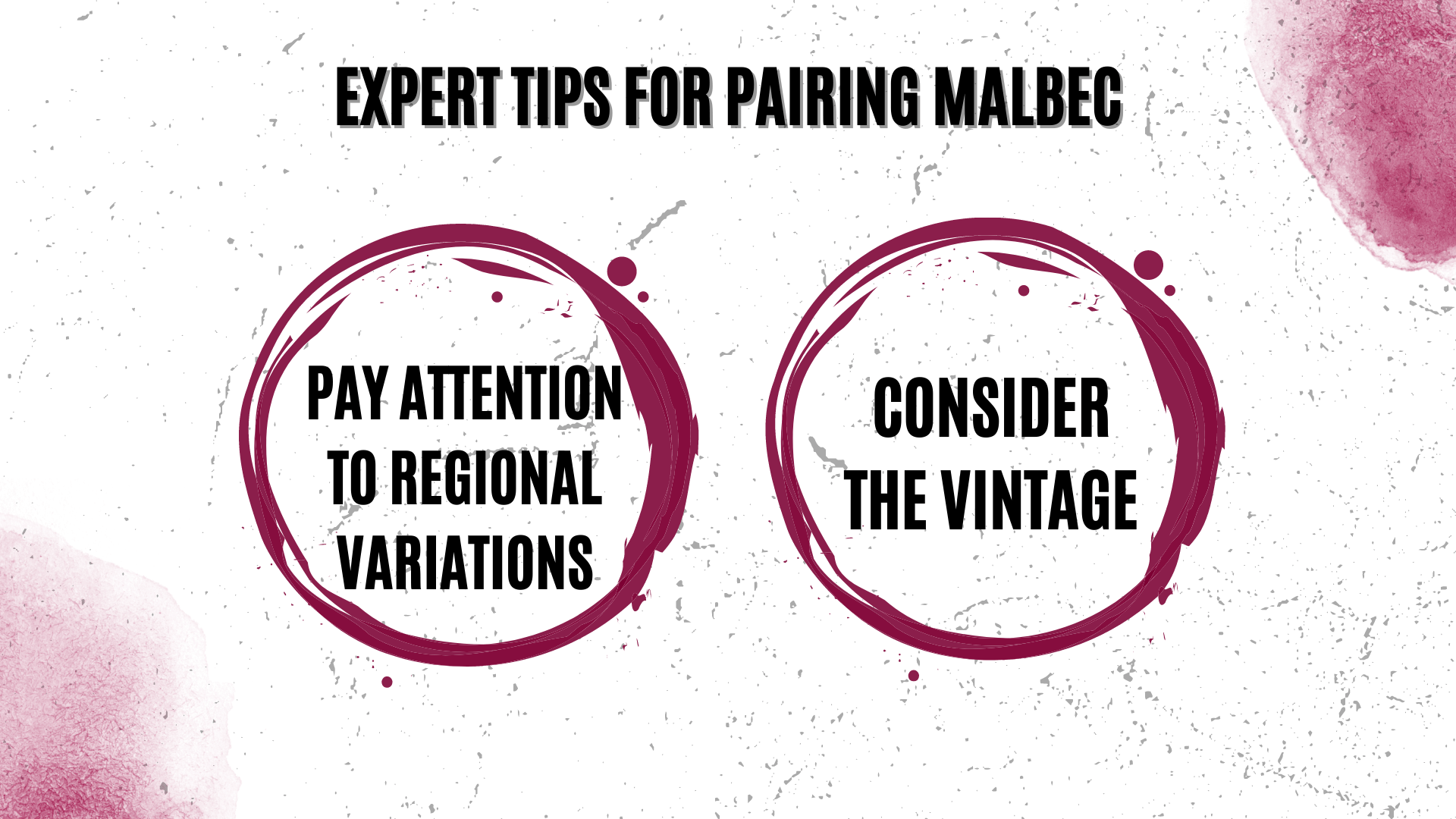Introduction
Malbec, a full-bodied red wine known for its dark fruit flavors and smoky finish, is a popular choice for food pairings due to its bold yet approachable profile. This guide will provide an overview of Malbec’s history, characteristics, and wine profile, along with essential tips and ideas for creating perfect food pairings.
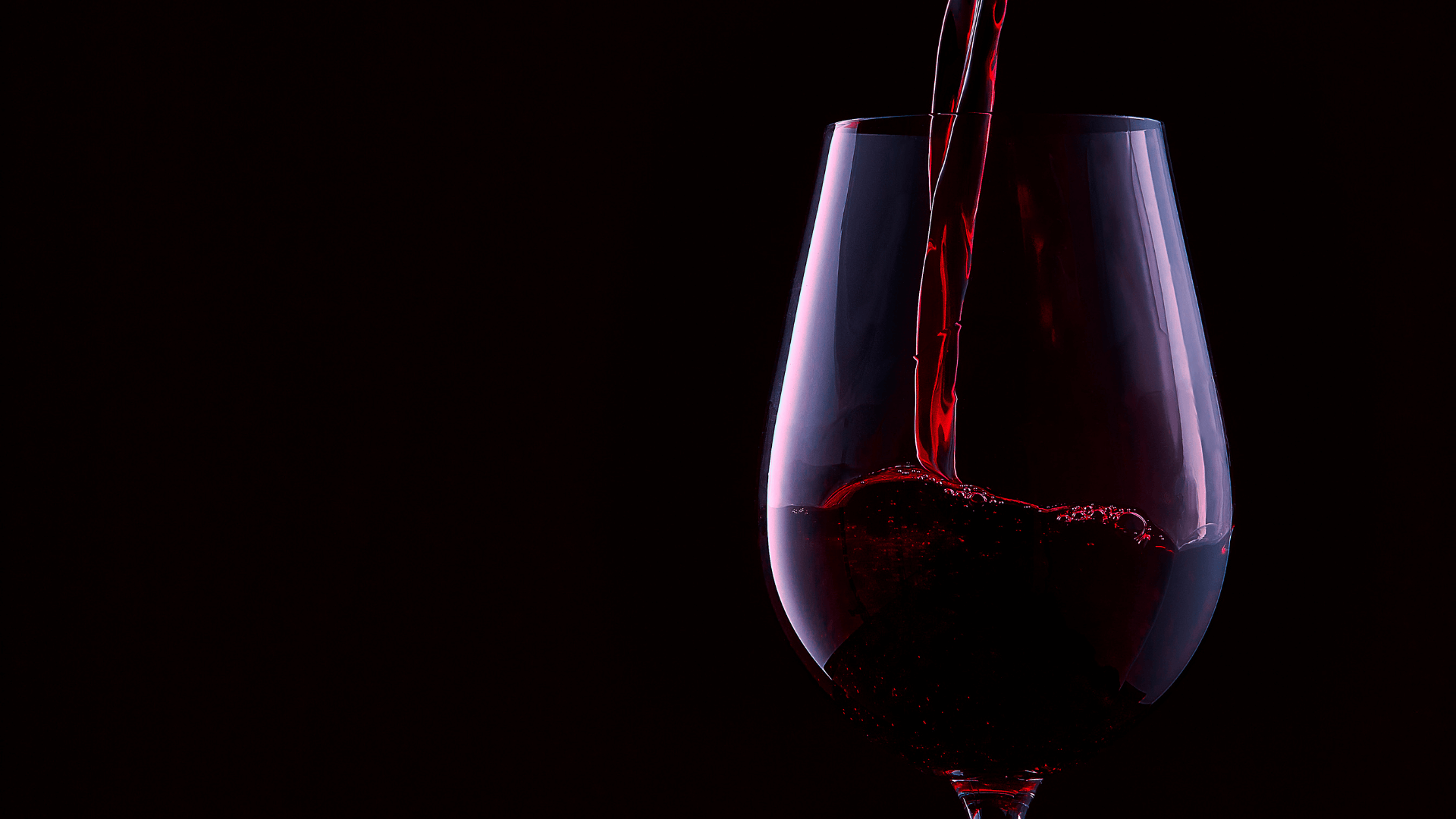
I. History
Originally from France, Malbec has become synonymous with Argentina, where it has flourished since being introduced in the mid-19th century. While still grown in small quantities in France’s Cahors region, Argentina is now the leading producer of Malbec, with the Mendoza region being the most famous for its high-quality offerings.
II. Wine Profile
Malbec is a full-bodied red wine with moderate acidity and medium to high tannins. Its dark fruit flavors, such as plum, blackberry, and black cherry, are complemented by notes of tobacco, leather, and dark chocolate. Malbec’s smoky and spicy finish is a defining characteristic, making it an ideal partner for a variety of dishes.
III. Characteristics of Malbec
- Full-bodied with moderate acidity
- Medium to high tannins
- Dark fruit flavors (plum, blackberry, black cherry)
- Notes of tobacco, leather, and dark chocolate
- Smoky and spicy finish
IV. Factors to Consider for Malbec Food Pairing
- Intensity of flavors in both the wine and the dish
- Complementary or contrasting flavors
- The role of sauces and spices in the dish
- Protein type and preparation method
V. Classic Malbec Food Pairings
- Grilled or roasted meats: Malbec’s bold flavors and tannins are a natural match for red meats like beef, lamb, and pork, especially when grilled or roasted.
- Barbecue dishes: The smoky notes in Malbec enhance the flavors of barbecued meats, such as ribs or pulled pork.
- Rich, hearty stews: Malbec’s full body can stand up to the intense flavors of slow-cooked stews, like beef bourguignon or osso buco.
- Blue and hard cheeses: The bold flavors of blue or hard cheeses, such as Roquefort, Stilton, or aged cheddar, can stand up to Malbec’s robust profile.
VI. Creative Malbec Food Pairings
- Mushroom dishes: The earthy flavors of mushrooms can complement Malbec’s fruit and tobacco notes, such as in a mushroom risotto or a mushroom-stuffed ravioli.
- Dark chocolate desserts: The bitter and rich flavors of dark chocolate can harmonize with Malbec’s dark fruit and chocolate notes.
- Spicy dishes: Malbec’s fruit-forward profile can balance out moderately spicy foods, like a spicy sausage pasta or blackened fish.
VII. Expert Tips
- Pay attention to regional variations: Argentine Malbecs tend to be fruitier and more approachable, while French Malbecs can be more tannic and rustic. Consider these differences when selecting a Malbec for your pairing.
- Consider the vintage: Older Malbecs may have softer tannins and more complex flavors, making them more suitable for delicate dishes or those with complex flavors.
Conclusion
Malbec’s full-bodied, fruit-forward profile and smoky finish make it a versatile wine for food pairings. By considering factors such as flavor intensity, complementary and contrasting flavors, and regional variations, you can create memorable food and wine pairings that showcase the best of Malbec.
Frequently Asked Questions
Malbec is best served at room temperature, around 65°F (18°C). This allows the wine’s flavors and aromas to fully express themselves.
Malbec is typically a dry red wine, with little to no residual sugar. Its fruit-forward profile, however, can give the impression of sweetness on the palate.
While many Malbecs are approachable in their youth, higher-quality bottles can benefit from aging, allowing the flavors to evolve and the tannins to soften. Depending on the quality and vintage, Malbec can be aged for 5-15 years or more.
Argentinian Malbecs tend to have a fruitier, more approachable profile, with softer tannins and a focus on dark fruit flavors. French Malbecs, particularly those from Cahors, can be more tannic and rustic, with earthy and savory notes in addition to dark fruit flavors.
If you’re looking for a substitute for Malbec in a food pairing, consider full-bodied red wines like Syrah, Zinfandel, or Cabernet Sauvignon. These wines share some of the bold, dark fruit flavors and moderate acidity that make Malbec a versatile food partner.


